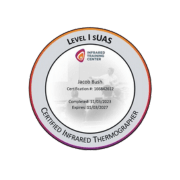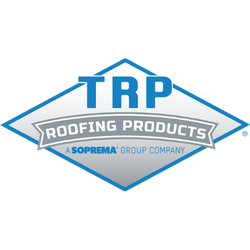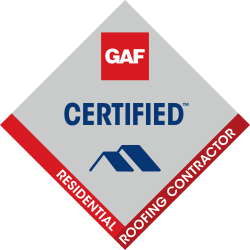What is a TPO Roofing System?
Many commercial property owners would do well to educate themselves on what a TPO roofing system is. After all, there are many different types of roofing systems and each one has its benefits and drawbacks. TPO is an acronym for thermoplastic polyolefin, which is a single-ply roofing membrane that covers the entirety of the roof. TPO is not necessarily a plastic. As a matter of fact, it’s a type of rubber that is a blend of polypropylene and ethylene-propylene rubber. TPO roofs are a fairly affordable options when it comes to commercial roofing installations. TPO generally costs less than EPDM or other types of rolled roofing materials. The ease of installation is also important to consider. TPO roofs can be attached with adhesives or fastened directly to the roof deck.

Is TPO Better than EPDM?
Are you vacillating between a TPO roof and an EPDM roof? If so, it will be important to consider the differences. EPDM has a dark surface that will absorb heat. In the winter, this is not a bad attribute, but in summer, solar rays are immensely powerful, and your EPDM roof will get hot. TPO roofing has the capability of reflecting sunlight, which can increase the energy efficiency of the building since air conditioners won’t have to work so hard. TPO is also slightly more resistant to punctures than EPDM.
Who Makes TPO Roofing?
There are many prominent manufacturers in the roofing industry that specialize in TPO roofing materials. For instance, GAF is a roofing manufacturer that produces TPO roofing systems. Your local professional roofing company will have vetted different TPO manufacturers to determine which is the best for their roofing installations. A quick phone call to your local professional roofing company will yield further results.
When was TPO Roofing First Used?
Apparently, in 1986 the first known TPO roofing membrane was installed. The product was produced by Montell and was specifically oriented for the roofing market. Since then, there have been many successful TPO roofing installations for flat and low-slope roofs.
How is TPO Made?
Are you wondering how TPO is made? If so, you’ve come to the right place. TPO, also known as thermoplastic polyolefin, is made from ethylene propylene rubber and different filler materials. These filler materials include talc, carbon filler, or fiberglass. In addition, rubber, ethylene, and propylene are polymerized using technology engineered for that purpose.
Where to Buy TPO Roofing
While it may seem like a good idea to attempt to purchase TPO roofing materials on one’s own. It is always a good idea to consult an insured, experienced roofing company for such applications. A professional roofing project manager will discuss what services are necessary for your TPO roofing repairs or roof installation. In addition, he or she will be able to discuss the costs upfront, but will bill you after the roof installation or repairs are completed. It is always worthwhile to contact a professional roofing company for your commercial roofing services.
Is TPO Roofing Good
TPO Roof Repair and Installation is worthy of investigating for any commercial flat or low-slope roofing system. If you would like to review whether TPO roofing is essential for your commercial roof replacement or installation, please review the following bullet points.
- Affordable. In many cases, a TPO roof installation is quite affordable for commercial property owners.
- Corrosion-resistant. One of the major benefits of a TPO roof is the fact that it is very corrosion resistant.
- An average roof lifetime expectancy of 20 years. With regular roofing maintenance, property-owners can see their TPO roof last quite a while.
Is TPO Roofing PVC
Both TPO and PVC roofing membranes are single-ply membranes that are designed to be utilized on flat or low slope roofs. While PVC has been used for roofing applications since the 1960s, TPO was introduced in the 1980s, making it a newer roofing material. These roofs are made out of different materials and will wear differently according to their composition.
How is TPO Roofing Installed
In order to understand more about TPO roofing materials, it is best to research how TPO is made. TPO membranes are manufactured in sheets. These sheets can be ten, twelve, or twenty feet wide. Once they are produced, the sheets are then rolled up and taken to the commercial facility. The first step to installation is to lay down the insulation. The insulation board will need to be attached with mechanical fasteners along with a plate. Based upon the roof height, geometry, and insurance requirements, the installation procedures will vary.

Would you like to schedule an appointment for your TPO roofing? Our friendly operators at Greenco Construction Services are available now at 469-858-2448. Discover more about the quality roofing material available for your TPO roofing in Dallas and Fort Worth, TX today!

















